by Alison Hugill // May 5, 2023
During this year’s Gallery Weekend, London-based artist Kira Freije opened her exhibition of new figurative metal sculptures in E-WERK Luckenwalde’s Turbine Hall. The exhibition, entitled ‘The Throat is a Threaded Melody,’ is part of the newly launched artistic program at E-WERK, which looks at the “silent power of materials to ignite systemic change.” The building’s former life as a power station is referenced throughout the program, which also features a film work by land artist Agnes Denes and a sound installation in the bowels of the building by German musician and founder of Einstürzende Neubauten, FM Einheit.
Freije’s exhibition has a theatrical quality to it, evoking the vernacular of domestic spaces in contradiction to the more monumental architecture of the cathedral or railway station hall. The characters that populate this scene are engaged in a variety of actions, ranging from the physically demanding to the inwardly contemplative: one seems to be taking a quiet break after having recently parachuted in from the hazy mist above, while others are deep in collaborative exertion, pulling and dragging and holding. A night watchman shines their flashlight on the chaotic spectacle, as if to condemn its illicitness. Still, the overarching narrative doesn’t reveal itself to us all at once (or even at all). Rather, the materials seem to dictate the figures and forms, and Freije surprises us with the insistence that metal is a delicate, eminently malleable and ultimately emancipatory element to work with. We spoke to the artist about her thinking behind this show, and how it addresses wider questions about human nature.
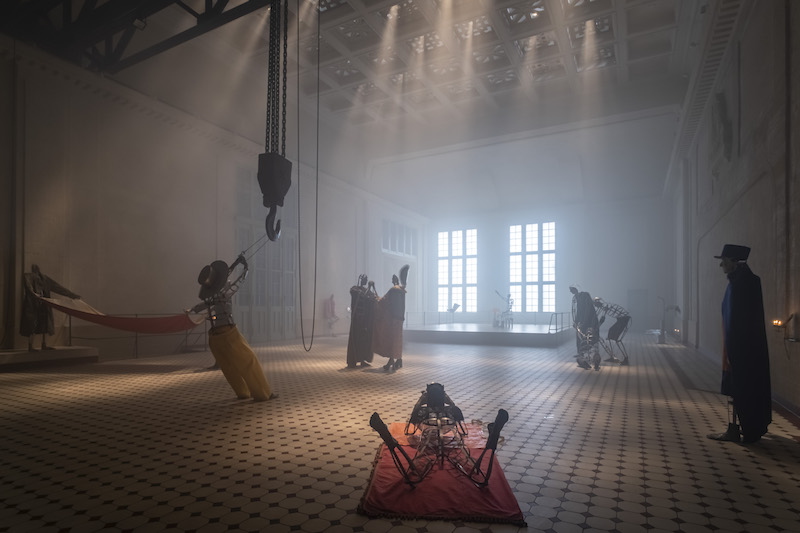
Kira Freije: ‘The Throat is a Threaded Melody,’ 2023, installation view at E-WERK Luckenwalde // © Mathias Voelzke
Alison Hugill: What aspects of the space here at E-WERK inspired the figurative sculptures you’ve created? How are they in dialogue with the Turbine Hall and the history of the building?
Kira Freije: The whole group of work was made especially for this space. That’s not to say that it was necessarily site-specific. Although there are touches of it: the figure here was always going to be pulling on the hook. The leaning figure was made to go against the wall. The candles were made specifically for the ledges. I worked with amazing lighting designers, Matt Daw and Johanna Jensen. In the historical Turbine Hall, the steam would have risen up. We’ve done the inverse, so the light is coming from above in a cathedral-like manner. The haze comes in subtly, as well. The idea was to maintain daylight but to have it in this kind of dusty situation, mimicking a train station or a cathedral. It works really well with the room. It’s remarkable to think that this room was part of something so industrial, when every wall is hand-chiseled.
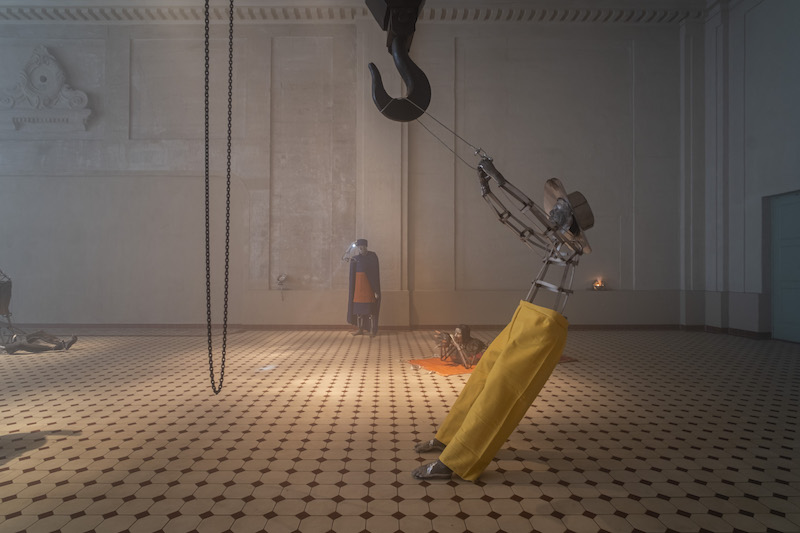
Kira Freije: ‘The Throat is a Threaded Melody,’ 2023, installation view at E-WERK Luckenwalde // © Mathias Voelzke
AH: You have this figure of the night watchman, who feels like he could be in a train station, and then others with halos who feel a bit more religious.
KF: Yes. I am very hopeful that these characters give the impression that they are coming from the same world. I wanted this feeling that they are passing each other but still very much caught up in their own personal narrative.
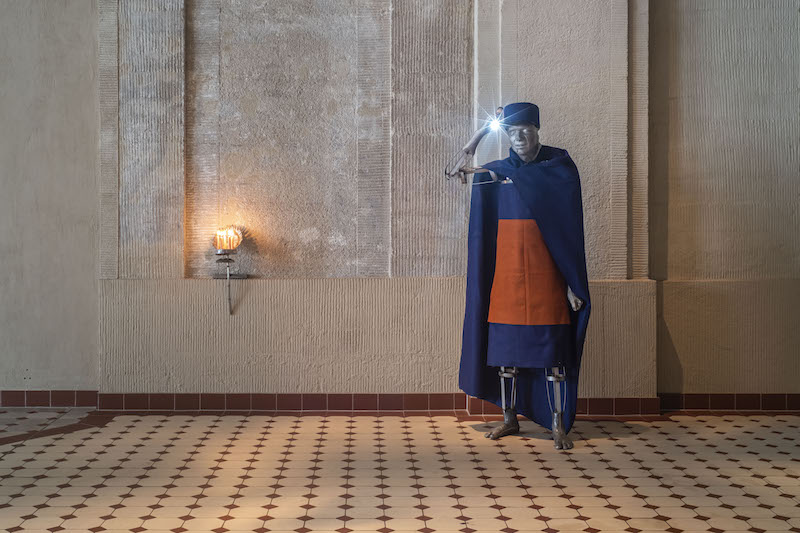
Kira Freije: ‘The Throat is a Threaded Melody,’ 2023, installation view at E-WERK Luckenwalde // © Mathias Voelzke
AH: Do you have a specific narrative in mind before you create these scenes?
KF: A very loose one. I never want there to be a fixed narrative. I like them to be contradictory, even. There should be a feeling of the unknown or mystery about it, so I prefer when the characters remain a little enigmatic. The moulds are all faces of my friends, or people in my life. I think a lot about which face will become which figure.
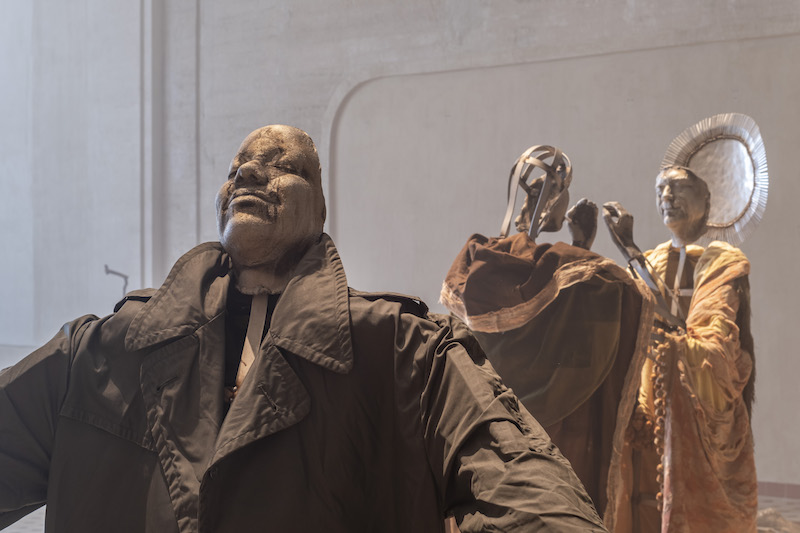
E-Werk_Luckenwalde_Kira_Freije_The_Material_Revolution_©_Mathias_Voelzke
AH: The exhibition text mentions power and powerlessness in these works. Is this meant as a metaphor for the former use of the building?
KF: I think about power and powerlessness more in terms of humanity, in general: the common feelings of desperation, control and fear. The uniform on the night watchman might signify a position of power or authority, but it’s also quite silly at the same time. He has a very childlike face and his fist is clenched. It highlights the contradiction or inversion that is always within the idea of power.
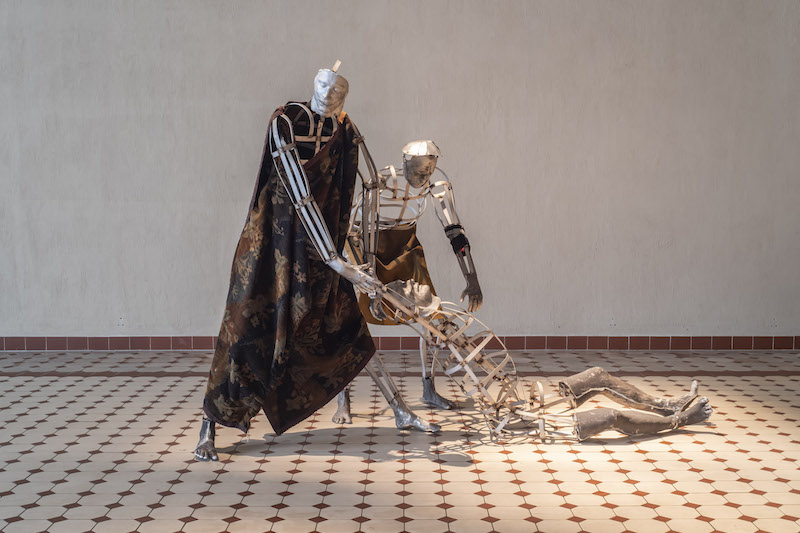
Kira Freije: ‘The Throat is a Threaded Melody,’ 2023, installation view at E-WERK Luckenwalde // © Mathias Voelzke
AH: What is the significance of the lamp in your work? It seems to be a recurring theme.
KF: There’s always a desire, for me, that light offers movement. Working with the lighting designers, we were able to do that in a bigger way here at E-WERK. In my work, there’s always an element of assemblage. The lamp or lampshade offers the safety of a domestic space in contradiction to the fear of impending doom inspired by other elements of the exhibition.
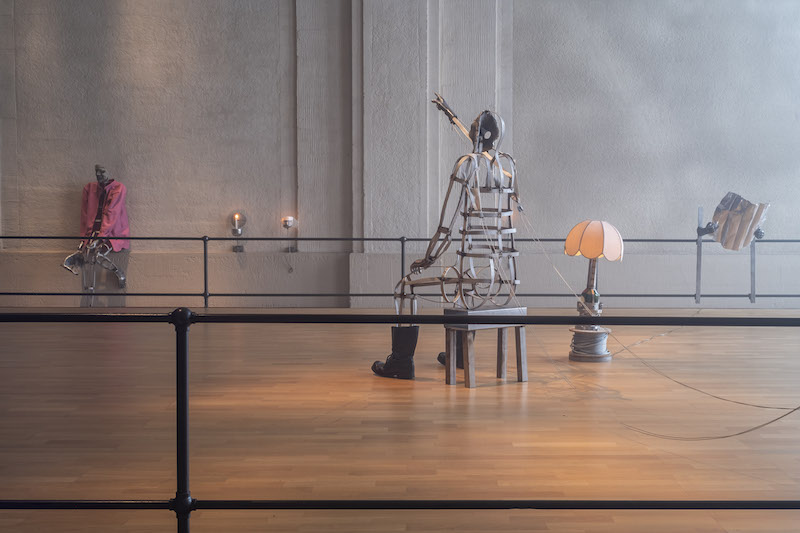
Kira Freije: ‘The Throat is a Threaded Melody,’ 2023, installation view at E-WERK Luckenwalde // © Mathias Voelzke
AH: The exhibition falls within the wider artistic program at E-WERK, entitled ‘The Material Revolution.’ What is the process like for making your sculptures, in terms of production methods and materials?
KF: I’ve always worked with metal. The sculptures are very technically basic: I am not interested in being a good metal-worker, in a technical sense. But it’s an amazing material to use. It’s kind of like paper: you can bend and cut and fold it. In contradiction to what people might think, everything is very organic in the way it’s formed. It’s really a material that enables an instinctive kind of working.
Exhibition Info
E-WERK Luckenwalde
Kira Freije: ‘The Throat is a Threaded Melody’
Exhibition: Apr. 29-July 16, 2023
kunststrom.com
Rudolf-Breitscheid-Straße 73, 14943 Luckenwalde, click here for map





















